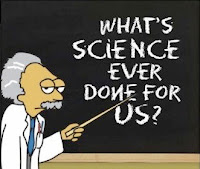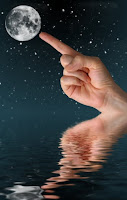Editorial Board, Wisdom Quarterly: American Buddhist Journal 2016
 |
| Dreams of the Future Buddha, Maitreya, at Diskit Monastery in the Nubra Valley of the Himalayas, stands 110 feet tall (Atamvir Singh Multani as Foxbatone/flickr.com). |
 |
| Fireworks will go off beginning in Tokyo, Australia, New Zealand, Dubai to ring in the New Year and drive out the old like God Saturn taking a baby. (Nashville TN, kfiam640.com/C2C) |
.
 |
| Beauty is truth: What we do New Year's... |
An Asian girlfriend once said a very striking thing: Whatever one does on New Year's Day one will be doing the whole year. Then when others said it, well, how can one doubt something that gets repeated?
Is it true? Truth is beauty, beauty is truth. Who know
s? So we asked around, and we were amazed at how many Eastern cultures share a belief in this truism:
 |
| Seeing is believing (YATL) |
Of course, it's self-evident, it's Ancient Chinese
Wisdom (which says "It's
gaay, i.e., "things not to be done, bad luck, superstitious, inauspicious").
It's the Knowledge of the Ages (like the many strictures and pieces of Old Wives Tales from the Indus Valley Civilization, Egypt, India, Greece, Sumeria, Rome, Angkor, Mesoamerica...).
It's what nearly everyone in Asia thinks and/or takes for granted. Some might go so far as to call it "common sense," more superstition or custom than controlled empirical research like we pretend forms the basis of all our beliefs.
We asked Sri Lankan monks. Ask your Italian grandmother; she probably thinks so, too.
 |
| The World Buddhist Sangha Council in English and Chinese (wbsc886.org) |

Somehow we lose sight of things in the West or argue that reality must somehow accord with our theories. The data is the data, theory the theory. It is always the job of the theory to accommodate the data, never the other way around.
 |
| Well, we massaged the data for one thing. |
If we start shifting the data -- the observations, the bare facts -- we'll distort things.
And we'll end up with a beautiful, internally-consistent theory that is just too gorgeous and elegant not to cling to.
But it won't be true. There's the rub. Reality is messy, fuzzy, so much bigger than we normally imagine.

A map is just a map, an outline. It can't be very detailed or it would have to be as big as the land and area it represents, in which case it would be no use lugging it around.
The finger points at the Moon. The finger is not the Moon. The sight of the Moon is not the Moon. The Moon is the Moon. Let's remember that as we meditate the new year in this year. Party by night, but visit a Buddhist temple or quiet spot for meditation in the morning of the first day of the year, Friday.
Happy New Year's from Wisdom Quarterly!
 |
| Today in History 2015...according to the Associated Press (via mail.com) |
 |
| Will fireworks be enough to scare away US dogs of war and ghosts of fear? (iheart.com) |
Which "Buddhism" should I practice?
Wisdom Quarterly Wikipedia edit
 |
| Revered Hindu-Mahayana deity (L) and Theravada Buddha Shakyamuni (flickr.com) |
Basic points unifying Theravāda and Mahāyāna is a very important Buddhist
ecumenical statement
It was created in 1967 during the First Congress of the
World Buddhist Sangha Council (WBSC).
Its founder, Secretary-General Ven. Pandita Pimbure Sorata Thera, requested that
Ven. Walpola Rahula present a concise formula for the
unification of all the different Buddhist traditions.
This text was then unanimously approved by the Council (
Norm Phelps, 2004,
The Great Compassion: Buddhism and Animal Rights, Lantern Books. p. 45).
Wiki has a great portal to learn about the Buddha-Dharma in English:






 Somehow we lose sight of things in the West or argue that reality must somehow accord with our theories. The data is the data, theory the theory. It is always the job of the theory to accommodate the data, never the other way around.
Somehow we lose sight of things in the West or argue that reality must somehow accord with our theories. The data is the data, theory the theory. It is always the job of the theory to accommodate the data, never the other way around.
 A map is just a map, an outline. It can't be very detailed or it would have to be as big as the land and area it represents, in which case it would be no use lugging it around.
A map is just a map, an outline. It can't be very detailed or it would have to be as big as the land and area it represents, in which case it would be no use lugging it around.



































































































































































































































No comments:
Post a Comment